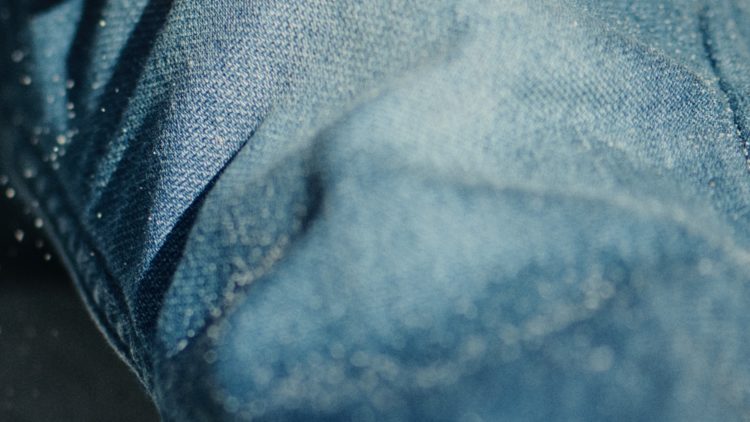
The jeans redesign project
The Jeans Redesign (JRD) project is a collaborative initiative by the Ellen MacArthur Foundation, to create jeans that are aligned with circular economy principles. As a participant of The Jeans Redesign project, we have followed The Jeans Redesign guidelines* in the design and product development process of this garment.

Made from safe and recycled or renewable inputs
H&M products compliant with The Jeans Redesign guidelines have a minimum of 20% recycled content (the minimum requirement in the JRD guidelines is 5%). The recycled material comes from either production waste (referred to as pre-consumer waste) or waste from used textiles (referred to as post-consumer waste). The content of pre-consumer waste in our JRD compliant products are as high as 100% for some garments. For more details see specific content information on each garment.

No harmful chemicals has been used in the finishing of this product (compliant with level 1, Zero Discharge of Hazardous Chemicals (ZDHC) ** Manufacturing Restricted Substance List as a minimum).
No Potassium Permanganate*** and only lower impact washing techniques were used on this product (low-impact score in EIM****, Environmental Impact Measurement tool by Jeanologia). The metal parts in this product are non-electroplated*****. The threads and zipper tape are made from recycled polyester.


Made to be made again
A minimum of 98% of all textile material used in this garment is of cellulosic content and can be made into new fibre and used again. Rivets have been replaced with bartacks to make disassembly easier in the recycling process.
Designed to be used more
These jeans are made to last and are tested to withstand a minimum of 30 home laundries. To help make the lifecycle of this garment as long as possible, please wash only when needed, wash at low temperature and avoid tumble drying. Remember to repair, resell and eventually recycle the garment at end of use!

* The second version of the guidelines, launched in 2021.
** The Zero Discharge of Hazardous Chemicals (ZDHC) is a list of chemical substances banned from international use in facilities that process textile materials.
*** Potassium Permanganate (PP) is a strong oxidizing agent used to create different finishes on jeans. The use of PP decreases performance and durability and is thus counterproductive to The Jeans Redesign goal of increased durability. PP in contact with skin can cause irritation, burning and pain; PP coming in contact with eyes carries the risk of permanent loss of vision. PP is also an environmental hazard, especially for marine pollution and can bioaccumulate in the food chain.
**** EIM is the first Environmental Impact Measuring software specifically developed for the garment finishing industry. It was created to provide the laundries and garment finishers with a tool that helps them to build more sustainable processes. The software assesses the environmental impact of the garment finishing process in the following categories: water consumption, energy consumption, chemical product used and worker health. HM has been using the EIM measurement tool since 2014.
***** Electroplating is the process of coating with metal by means of and electric current. The major environmental issues associated with electroplating activities are the generation of hazardous wastes and effluent disposal as well as odour and noise.